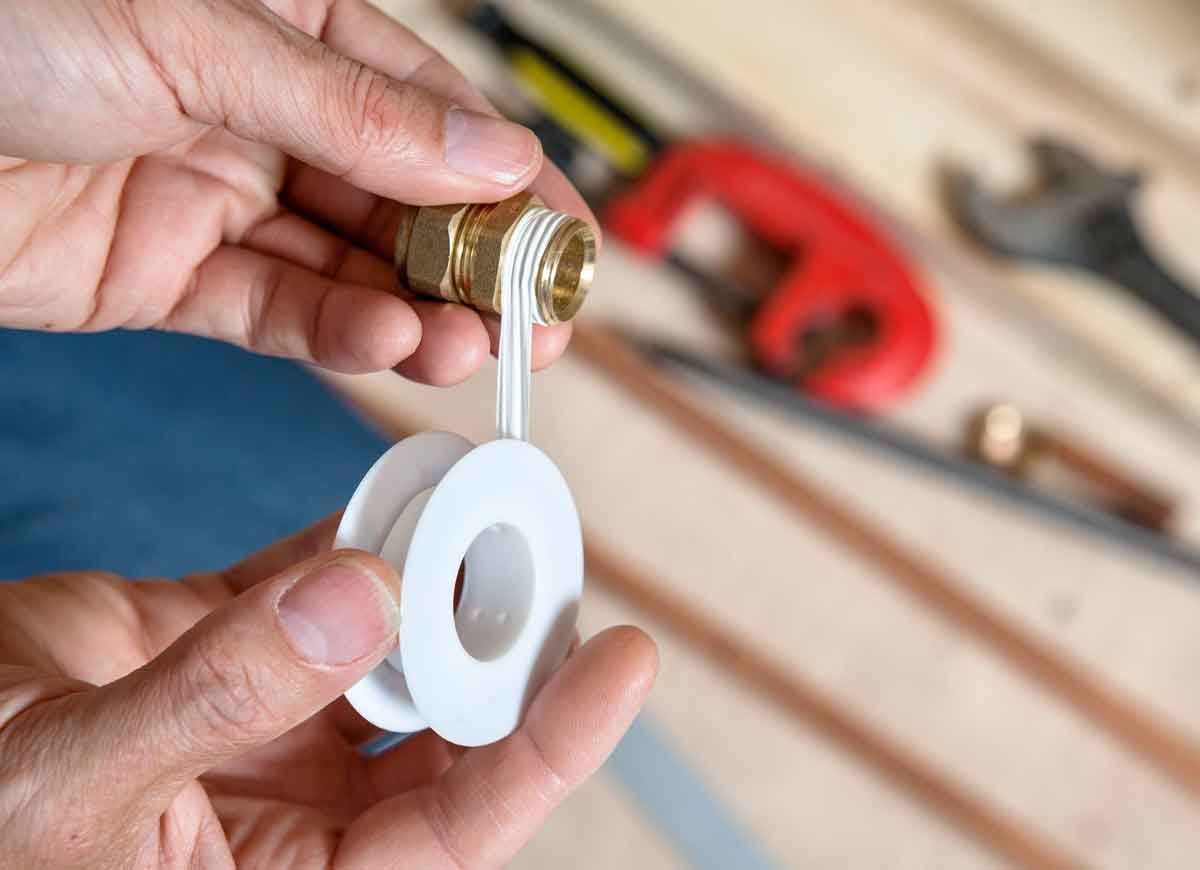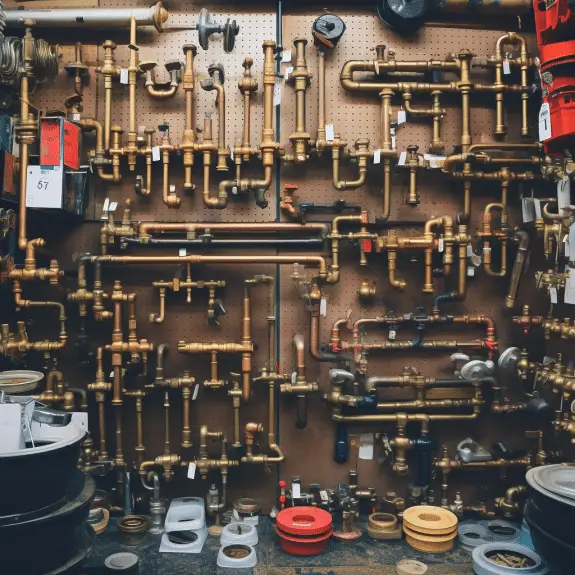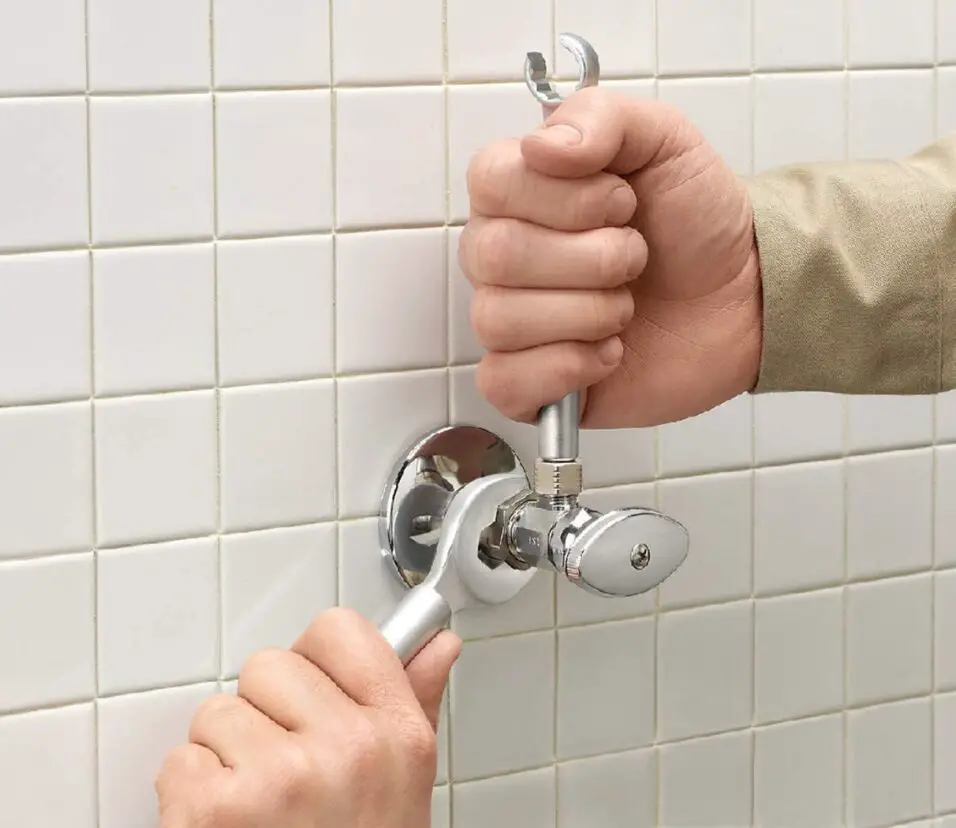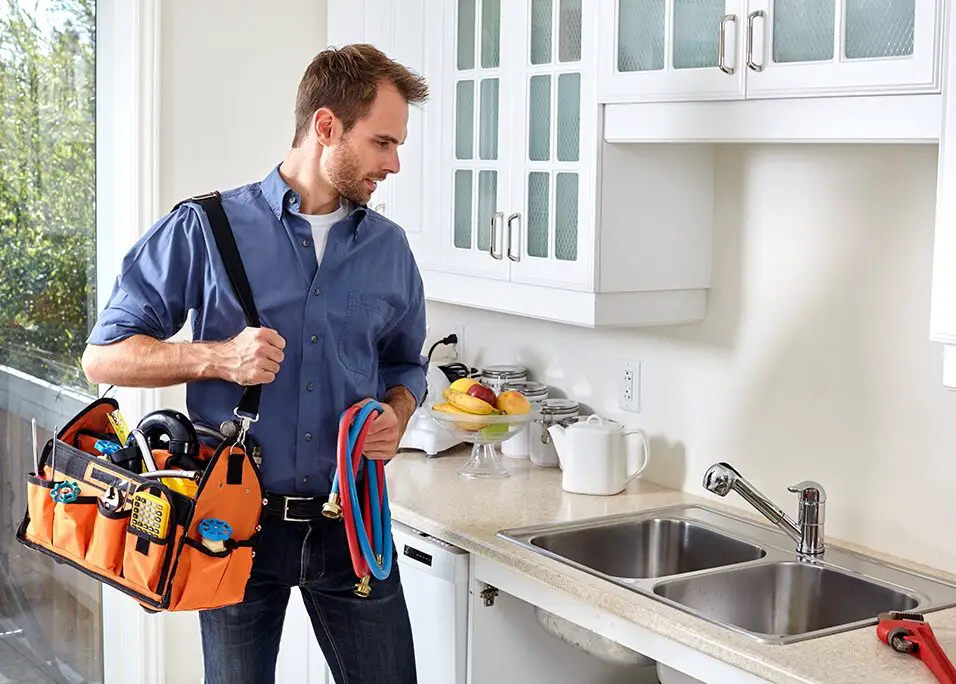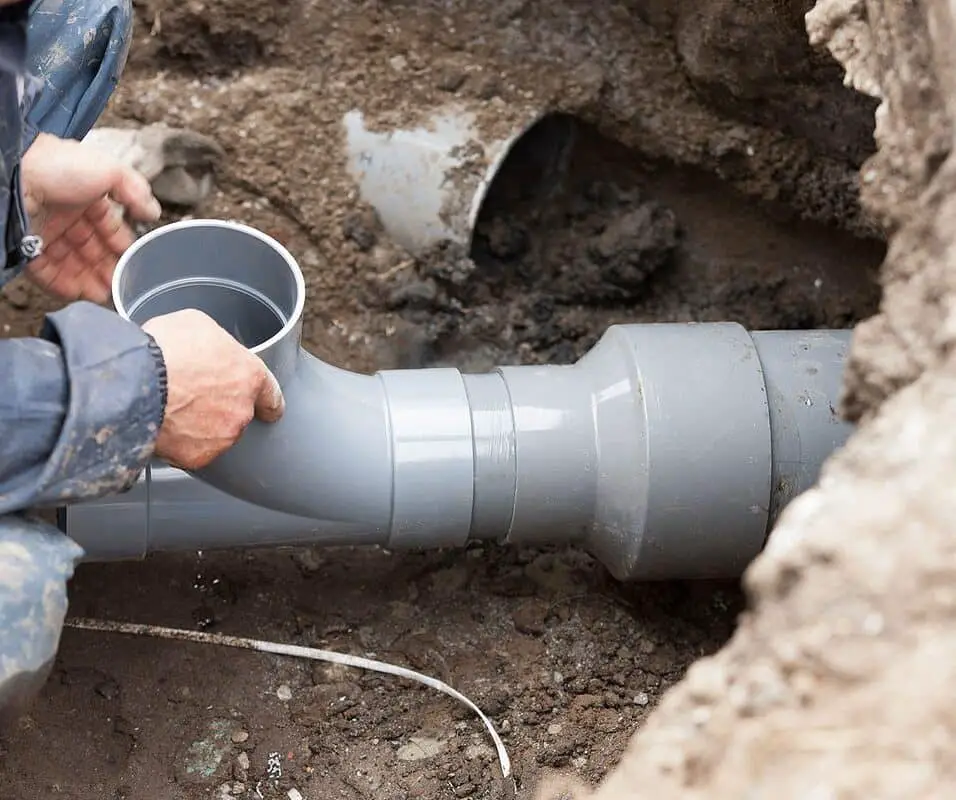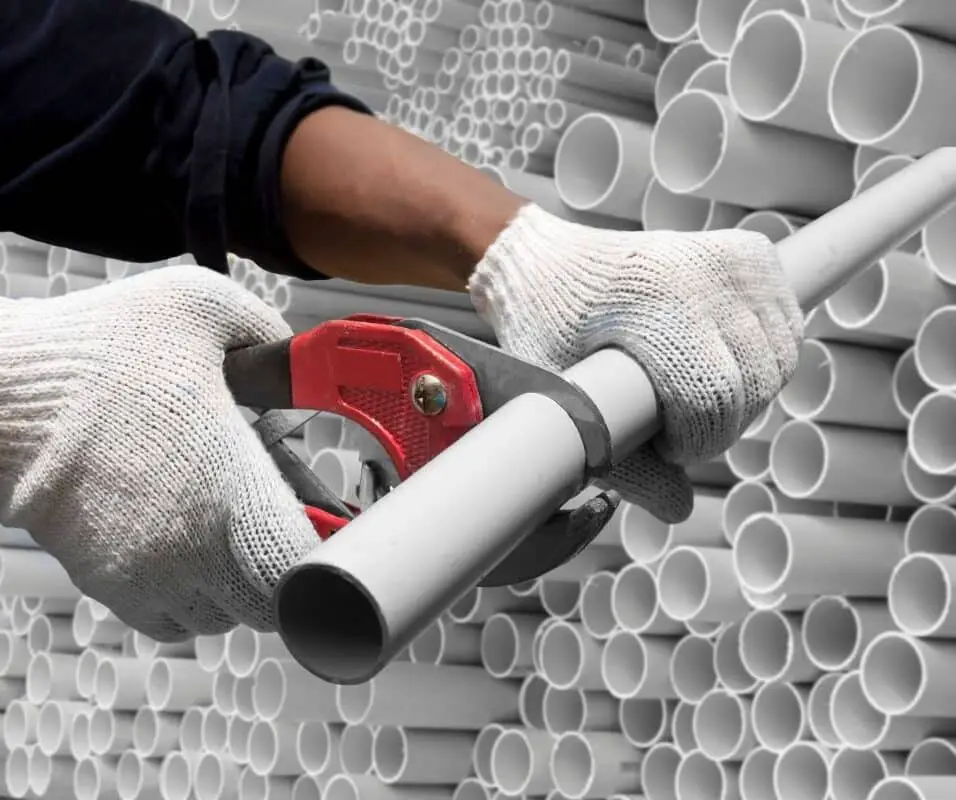How To Apply Plumbing Tape
Introduction
How To Apply Plumbing Tape: You can also call it a plumber’s tape or Teflon tape. Plumbing tape is often used for plumbing jobs. Its main job is to stop leaks in fixed pipe joints and make seals that keep water out. This is how you should use plumbing tape if you are new to building or have never used it before. This will make sure that it closes well and stops water damage. We’ll show you how to put on plumbing tape step by step, talk about. Why it’s vital to do it right, and then provide you some tips for the best results.
Polytetrafluoroethylene (PTFE). Which is used to make plumbing tape, is a thin, bendable tape that doesn’t stick and can handle high temperatures. It is often put on threaded pipe joints to make a tight seal that keeps gas or water from leaking. It is very important to use plumbing tape properly to make sure the connection is safe and doesn’t leak.
To apply plumbing tape, start by ensuring that the pipe. Threads are clean and free from debris or old tape residue. Begin wrapping the tape in a clockwise direction around the pipe threads. Overlapping the tape by about half its width with each wrap. It is essential to apply the tape tightly and evenly, making. Sure to cover all the threaded areas that will come into contact with the fitting. Keep wrapping until you reach the end of the threaded section, and then tear or cut the tape. After applying the tape, tighten the fitting firmly to create a watertight seal.

How many times do you wrap plumber’s tape?
By using a PTFE tape sealant with a minimum thickness of 2.5 mil. You ensure that the tape is thick enough. To provide a good seal and you won’t waste tape. To ensure a good seal, wrap the tape in the direction of the threads. You only need to use 2-3 wraps of tape, however thinner tape may need 4-5 wraps.
When using plumber’s tape, also known as Teflon tape or thread seal tape. The general recommendation is to wrap it around the threaded pipe fittings 3 to 5 times. However, the number of wraps may vary depending on the specific application and the thickness of the tape being used.
To stop leaks, plumber’s tape is used to make an impermeable connection between threaded joints. If you wrap the tape too many times, it might be hard to get the fits tight enough. And if you wrap it too few times, the seal might not be good enough. For this reason, most experts say to use an adequate amount of wraps, like 3 to 5. To get a good seal without making the link less tight.
How does plumbers tape stick?
Pipe leak tape works by forming a watertight seal when it is applied to the pipe. The adhesive on the tape creates a bond that will not break or leak. The tape can be used on metal, plastic, and rubber pipes, and it will withstand pressure.
A type of tape called plumber’s tape, thread seal tape or Teflon tape is often used. In plumbing to make a watertight seal in threaded pipe joints. The material is thin and bendable, and it doesn’t stick. Polytetrafluoroethylene (PTFE) is a common choice.
The tape sticks due to a combination of factors
Material Properties
PTFE has a low coefficient of friction, which means it has a slippery surface. This characteristic allows the tape to be easily wrapped around threads without sticking to itself or the fittings.
Tension and Pressure
When the tape is wrapped tightly around the threaded fittings, tension is created. This tension helps hold the tape in place and prevents it from unraveling.
Thread Interference
The tape covers the holes and bumps across the threaded surfaces, making a shield that keeps leaks from happening. The tape gets a little tighter as the threaded parts are tightened together, which makes the seal even better.
It is important to know that plumbers tape is not normally used as glue. It doesn’t stick to surfaces because it’s not sticky. Instead, it uses the features of the material and the way threads work to make a tight seal that keeps water out.
How long does plumbing tape last?
Silicone tape can help form a temporary waterproof seal and prevent water from leaking until you replace the pipe. How Long Does Pipe Leak Tape Last? Pipe thread tape can last for years. As long as the joint isn’t leaking, you can consider it a long-term solution.
Plumbing tape, which is sometimes called Teflon tape or thread seal tape, is often used in plumbing to make a tight seal between threaded joints, like those on pipes and fittings. Plumbing tape has different life spans based on things like the quality of the tape alongside the conditions it is used in.
Good plumbing tape can usually last for a few years without breaking down or losing its usefulness. But it’s important to remember that plumbing tape isn’t a permanent fix. It may need to be changed after a while, especially if it starts to wear down or break.
Exposure to extreme temperatures, chemicals, or constant pressure can accelerate the aging process of plumbing tape. If you notice any leaks or issues with a sealed connection, it’s advisable to inspect the tape and consider replacing it if necessary.
What is the best tape for leaks?
Butyl tape is great because it adheres to a wide variety of surfaces, such as glass, metal, plastic, and wood. Both butyl and silicone rubber are great outdoor waterproof tapes for sealing up a leak in the roof or patching a hole in a boat.
When it comes to choosing tape for leaks, there are a few options that are commonly recommended. Here are a few types of tape that are often used for sealing leaks:
Teflon Tape
Teflon tape, also known as plumber’s tape or thread seal tape, is a thin, white tape that is commonly used to seal pipe threads. It is an effective choice for sealing leaks in plumbing connections, such as pipe joints and fittings.
Silicone Tape
Silicone tape is a self-fusing tape that bonds to itself when stretched and wrapped around an object. It creates a watertight seal and is often used for emergency repairs, including leaks in hoses, pipes, or electrical connections. Silicone tape is resistant to heat, cold, and various chemicals.
Duct Tape
Duct tape is a versatile tape that is known for its strength and adhesive properties. While it may not be the most long-lasting solution for leaks, it can provide a temporary fix in certain situations. Duct tape is commonly used for sealing leaks in air ducts, HVAC systems, and other household applications.
Waterproof Tape
Waterproof tapes, like vinyl or rubberized tapes, are made to stop leaks and make a shield that keeps water out. Most of the time, these tapes are long-lasting, bendable, and don’t absorb water, so they can be used outside or in places that get a lot of water.
It’s important to note that while tape can be useful for temporary or minor leak repairs, it may not always be a permanent solution. For significant leaks or critical areas, it is recommended to consult a professional plumber or appropriate expert to address the issue properly.
Which tape is used to prevent leakage?
Rubberised tape is the most commonly used adhesive and can be used to fix large cracks, gaps and holes. Double sided tapes made out of a rubber adhesive instantly seals out water, air and moisture to create a flexible barrier. Double sided tapes that makes use of rubber silicone can be used to fix water leaks.
There are various types of tapes used to prevent leakage depending on the specific application. Here are a few commonly used tapes for different purposes:
Duct Tape
Duct tape is a strong and versatile adhesive tape that can be used for sealing and patching leaks in various applications, such as ductwork, pipes, and hoses. It has a wide range of uses and is known for its durability and water resistance.
Teflon Tape
Teflon tape, also known as plumber’s tape or thread seal tape, is specifically designed to prevent leaks in pipe fittings and joints. It is made of polytetrafluoroethylene (PTFE) and is commonly used in plumbing applications to create a tight seal and prevent water or gas leaks.
Waterproof Tape
Waterproof tapes are designed to provide a barrier against water and moisture. These tapes are often used in outdoor applications, such as sealing leaks in roofs, windows, or other areas where water intrusion may occur. They are typically made of materials like rubber, silicone, or butyl rubber.
Electrical Tape
Electrical tape is used primarily for insulating electrical wires and connections, but it can also be used to prevent leaks in certain situations. It provides some level of water resistance and can be used to temporarily seal small leaks or cover gaps in electrical enclosures.
It’s important to note that the effectiveness of tape in preventing leakage depends on the specific circumstances and the severity of the leak. In some cases, professional repairs or specialized sealing products may be required for more reliable and long-lasting solutions.

What tape is used in water pipes?
Thread seal tape (also known as PTFE tape, Teflon tape, or plumber’s tape) is a polytetrafluoroethylene (PTFE) film tape commonly used in plumbing for sealing pipe threads. The tape is sold cut to specific widths and wound on a spool, making it easy to wind around pipe threads.
The most common type of tape used in water pipes is called Teflon tape, also known as plumber’s tape or thread seal tape. Teflon tape is a thin, white tape made from polytetrafluoroethylene (PTFE), which is a non-stick material. It is used to create a watertight seal between threaded pipe fittings.
When installing or repairing pipes, Teflon tape is wrapped around the male threads of the pipe before connecting it to the female threads of another fitting. The tape fills in any gaps or irregularities between the threads, preventing water leaks when the fittings are tightened together. Teflon tape is resistant to water, chemicals, and heat, making it suitable for various plumbing applications.
It’s important to note that Teflon tape is typically used for threaded connections, not for pipes that are glued or soldered together. In those cases, appropriate adhesives or soldering techniques are used to create a secure joint.
How many layers of plumbers tape?
In most cases for a new joint you should apply only two or three wraps of tape. On older fitting where the threads may be damaged you may consider adding a few more wraps, but keep the number of warps to a minimum.
Plumber’s tape, also known as Teflon tape or thread seal tape, is typically used to create a watertight seal on threaded pipe fittings. The number of layers of plumber’s tape required depends on the specific application and the condition of the fittings being used.
In general, a single layer of plumber’s tape is usually sufficient for most standard applications. The tape should be wrapped clockwise around the male threads of the fitting, covering the entire threaded area. It is important to avoid wrapping the tape too thickly, as this can prevent the fitting from properly engaging and can cause leaks.
However, if the fittings are particularly worn or if you’re dealing with difficult-to-seal connections, you may need to apply multiple layers of plumber’s tape. In such cases, it’s recommended to use no more than three layers of tape to avoid excessive thickness.
Do you use plumbers tape on PVC?
Here are some of the Do’s and Don’ts of PVC joint assembly: Don’t over-tighten joints by giving them “one more turn to be sure.”Do finger tighten plus one or two turns – No More. Don’t wrap Teflon tape or Teflon paste or pipe dope to add bulk to or to lubricate the joint. Do use a sealant for threaded joints.
Yes, plumbers’ tape can be used on PVC (polyvinyl chloride) pipes and fittings. Plumbers’ tape, also known as Teflon tape or thread seal tape, is commonly used to create a tight and leak-free seal on threaded connections in plumbing systems. It is a thin, white tape that is wrapped around the threads of the pipe or fitting before assembly.
When working with PVC pipes, plumbers’ tape can help lubricate the threads and provide an additional layer of sealing to prevent leaks. It is particularly useful when connecting threaded PVC fittings or when connecting PVC pipes to metal fittings.
Assemble the PVC pipe and fitting together, tightening them by hand or with a wrench if necessary.
Remember that plumbers’ tape is primarily designed for sealing threaded connections, so it should not be used as a substitute for proper solvent welding or gluing methods when joining non-threaded PVC pipes and fittings.

Conclusion
knowing how to apply plumbing tape is an essential skill for anyone working on plumbing projects. Properly applying plumbing tape ensures secure and leak-free connections in threaded pipe fittings, preventing water damage and potential issues down the line. By following the step-by-step guide and considering the importance of proper application techniques, you can confidently use plumbing tape to create watertight seals.
Remember to clean the pipe threads thoroughly and wrap the tape tightly and evenly in a clockwise direction, overlapping the tape as you go. Taking care to cover all threaded areas that will come into contact with the fitting ensures effective sealing. It is crucial not to over-tighten the fittings, as this can cause damage or distortion to the threads.
Using the correct type and size of plumbing tape for your specific application is important for optimal results. Understanding the properties and purpose of plumbing tape, typically made of PTFE, allows you to select the right tape for your project. Whether it’s for water or gas connections, applying the tape correctly helps fill gaps and irregularities in the threads, creating a tight seal and preventing leaks.



